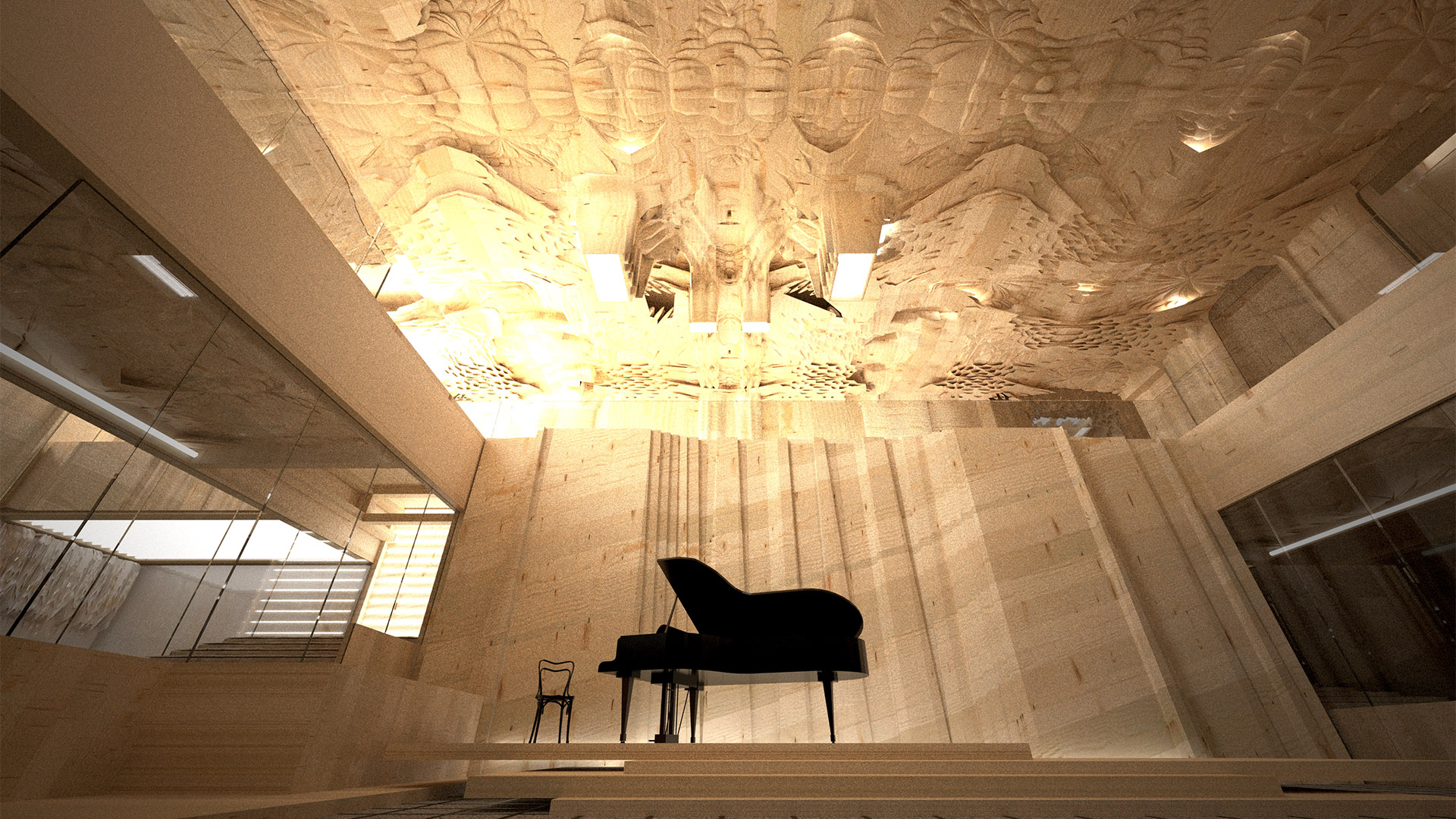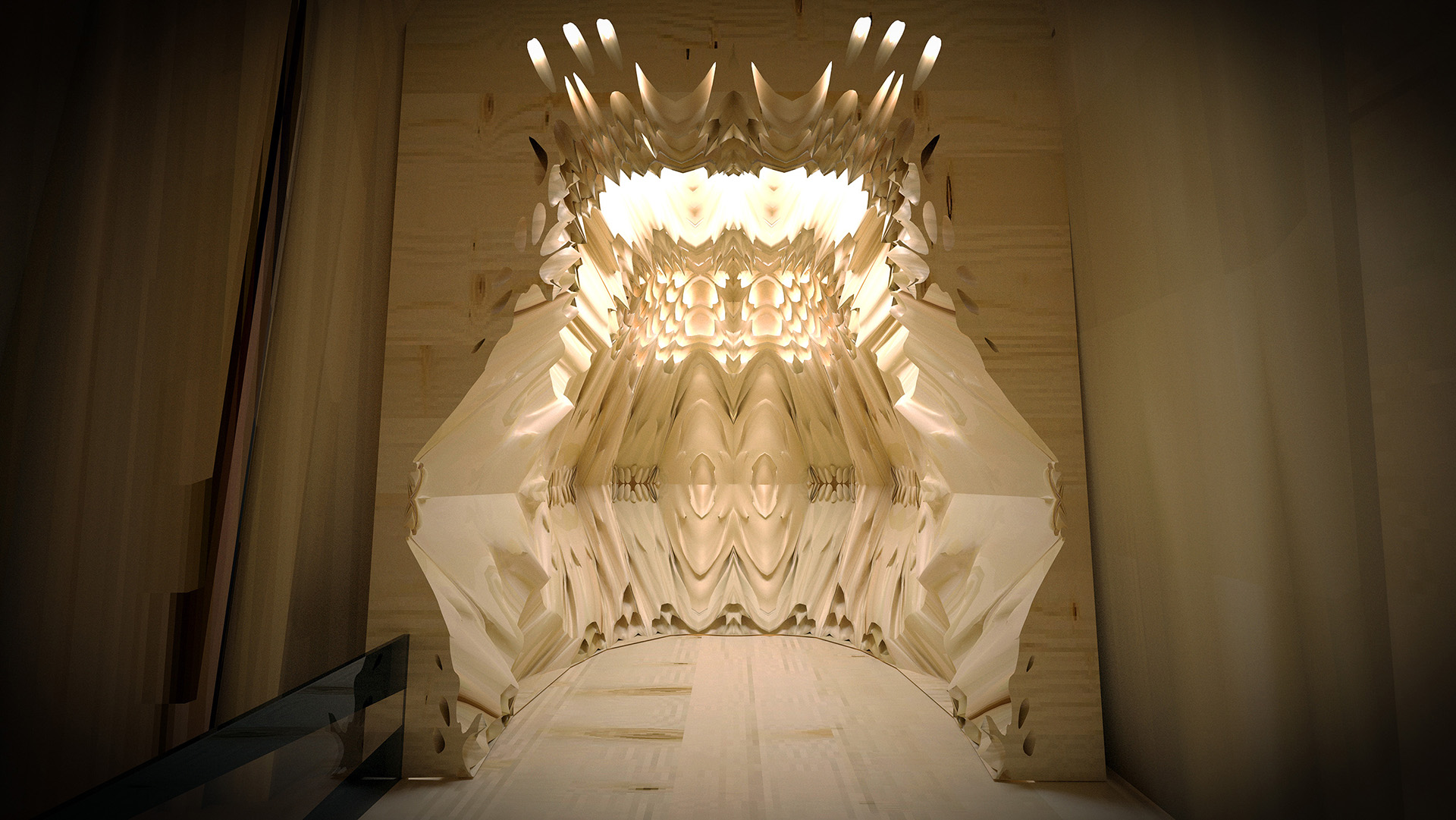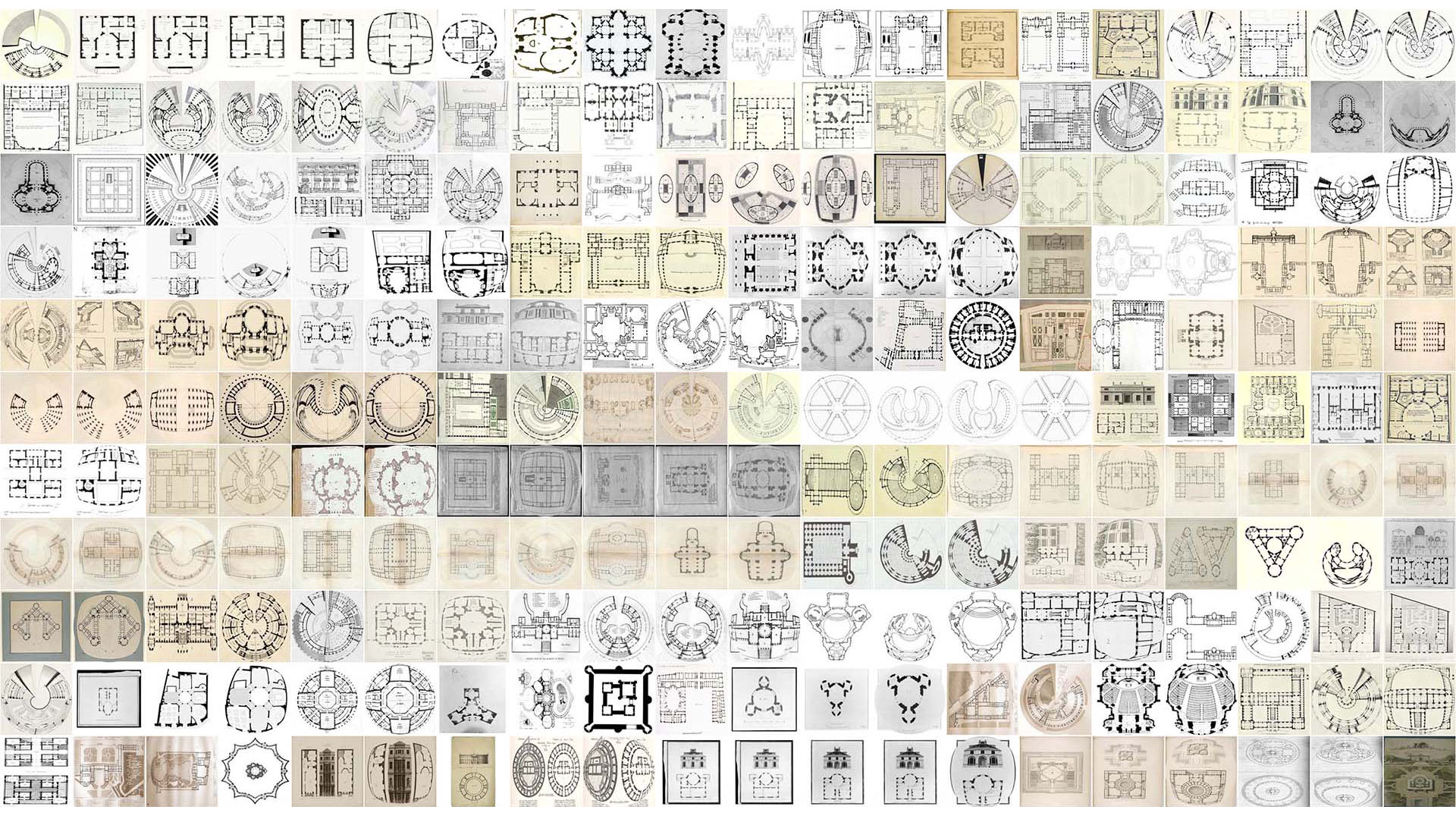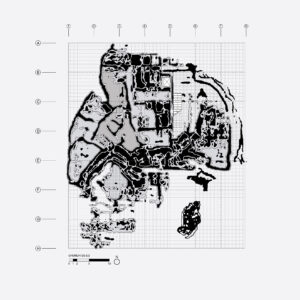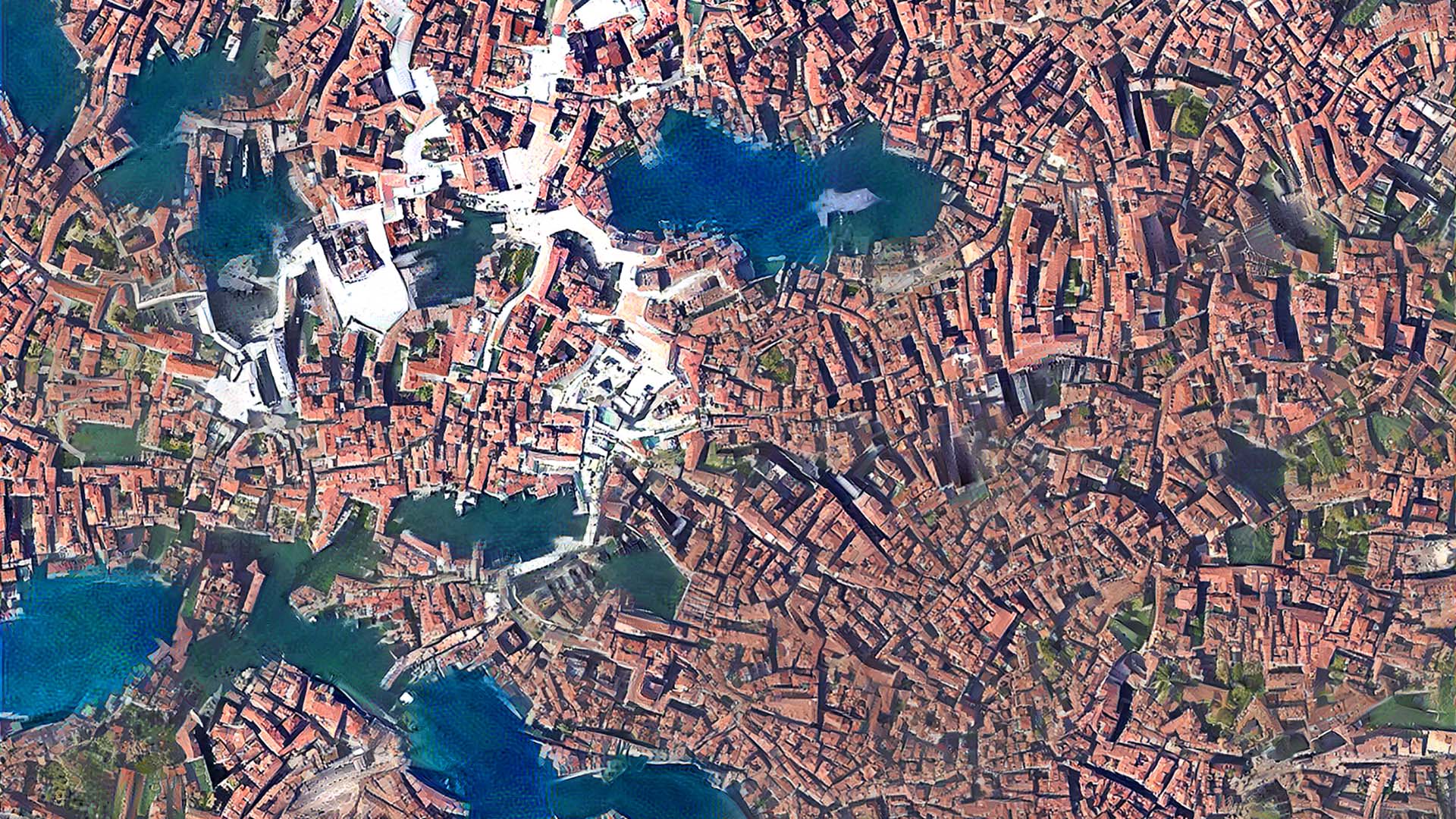
From Data Scarcity to Data Abundance: AI as an Agent of Culture with Matias del Campo
In the rapidly developing field of artificial intelligence in design, the architectural practice SPAN, co-founded by Dr. Sandra Manninger and Dr. Matias del Campo, investigates technology not only as a tool but as an agent of culture.
SPAN has gained prominence in the field of advanced computational design and philosophy through projects such as the recently completed Robot Garden at Michigan Robotics, the first built project of its kind designed using Artificial Neural Networks. Their work ranges from installations to city planning, with a dedicated focus on researching the potentials of AI in architecture.
Through analysis of the architect’s process, SPAN is developing new design methodologies that learn from a human designer’s unique ability to recognize and understand data to develop creative solutions through a combination of past experience and pattern perception.
Data Aided Design spoke with Dr. del Campo, Associate Professor of Architecture at the Taubman College of Architecture and Director of the Architecture and Artificial Intelligence Lab at the University of Michigan, about the emergence of these digital tools and the impact these developing technologies have on the culture of design.
Portions of this interview have been condensed for publication.

Tell us about your academic and professional background and how your research into architecture and artificial intelligence began.
Sandra Manninger and I established SPAN in Vienna, Austria, in order to give our ideas about architecture a physical body in the form of installations, artwork, and built structures. SPAN was founded as an outlet for our research on the intersection between advanced technology and the cultural discourse these technologies provoke.
We have been described as members of the lineage of Viennese architects obsessed with technology. However, this is not an obsession with technology as a tool of expedience, but rather the interest is in the interrogation of the tool as an agent of culture. Architects such as Walter Pichler, Haus Rucker Co, Coop Himmelblau and Hans Hollein form gravitational fields for my work. Most of those were also my teachers, and I ultimately went to work for Hans Hollein for almost a decade.
The interrogation of contemporary culture informed by a combination of advanced technologies, theory, and philosophy, is what I try to encapsulate with the projects we do together with our team. If I would have to describe my work, I would say that it reflects on the possibility that architectural form and content can emerge outside an anthropocentric universe through emergent design methodologies. In doing so the work yields new discursive and cultural readings – an issue that I have described as “Architecture in the Posthuman Age”.
The main method that I explore currently to achieve this is the use of Artificial Intelligence for designing and planning in architecture. With this in mind, a primary interest resides in novel possibilities in negotiating the architectural object within a manifold of conditional possibilities and gravitational fields of influence such as architectonic archetypes -column, compartment, aperture, and so on- aspects of alternative contextualizations such as social, political or economic, and contemporary methods of materialization such as automated or ecologic.
Vienna is home to one of the world’s oldest clusters of research on artificial intelligence: the OFAI, the Austrian Institute of Artificial Intelligence, founded in 1969. About 30 years later, in summer 1998, Sandra Manninger and I were sitting around in a Schanigarten, in the court of the Baroque ensemble that houses the OFAI. We were discussing the possibilities of integrating artificial intelligence into architectural design with Prof. Trappl, the director of the OFAI, and Dr. Arthur Flexer. Of course, this was a purely hypothetical conversation since neural networks based on computational processes were in their infancy. A couple of years later, in 2006, SPAN conducted the first machine learning workshop at the Angewandte in Vienna. After the move to the University of Michigan, a collaboration with Michigan Robotics and Computer Science paved the way for a series of new design techniques. In particular, the director of Michigan Robotics, Jessy Grizzle, and Ph.D. student Alexa Carlson have been crucial in this collaboration. This collaboration forms the technological base for the work of our practice in regards to AI and Architecture, as exemplified with the Robot Garden – a robot testing ground- that we designed with, and for, the Robotics department. The first built project entirely designed using GAN’s. (Generative Adversarial Networks.)
At the same time it became evident that AI is leaving its mark in the art discourse. Artists like Mario Klingemann and Sofia Crespo made a real impact in my thinking about the role of AI in a creative process, triggering discussions about agency, authorship and the meaning of art in a Posthuman ecology.

With the emergence of more powerful computational hardware, designers have begun to embrace the possibilities of artificial intelligence as a tool for design. How has artificial intelligence impacted the field of design?
Architecture design is a very volatile process, it is hard to break down into discrete chunks. Attempts to do so very often fail, or just over-simplify the intricate neurological processes involved in a design process. It is almost impossible to judge architecture design on a purely pragmatic level. They always simultaneously discuss aspects that include planning processes, economic environments, material preferences, political conditions, stylistic fashions, aesthetics, and the general culture of the time the design was created.
Whether this be in the rigorous structure and geometrical purity of a Renaissance building, or in the intricate voluptuous and at times, as Mario Carpo put it, messy geometry of the architecture of big data, in both cases it is not surprising that the intrinsic matter of designing involves aspects of ideology. Both examples mentioned above can be identified as representative of ideologies that span areas beyond shape and geometry and involve political, social, and economic conditions. It might not surprise that, to that extent, they also represent a vessel and repository of the history of architectural imaginations, and, as such, can be considered an enormous mine for new ideas on the nature of architecture. What is meant by this? Traditionally, prospective architects are trained during their studies to operate like data miners. Every new project is based on the hundreds and thousands of images ingested during the training they received in architecture school. This of course is an oversimplification of a highly complex pedagogical model, but at the very core, there is an element of truth to it. Learning the trade of designing architecture is a profoundly visual matter, amplified in the age of social distancing with Instagram, Pinterest, TikTok, Zoom, and Miro boards. This image-based tradition can be exploited with a series of techniques deriving from AI research such as Styletransfer, CycleGAN, StyleGAN, etc.
What goes beyond the ability to simply ingest imagery is the inherently human ability to perform pattern recognition. One of the things the human mind is particularly skilled at is recognizing events and objects, separating fore- and background. That also implies the ability to even recognize that an error or mistake holds the potential for a creative solution to a problem. How can this, computationally rather difficult to grasp, problem be harnessed to differentiate between successful and unsuccessful image to image style transfer? This is where the aspects of the neural network’s learned features come into play. (Factually, what it has learned are salient pixel patterns within a given image – just saying). We can use trained neural networks to successfully identify specific features within images, and in the context of architecture design, we can create images of possible projects based on specific, predetermined, datasets. Of course this brings along a whole set of other problems such as questions about the semantic information, correct labeling, and proper training of networks, but I’ll try to keep the Geek talk low. In any case, I should mention the ethical implications of the work on databases that include aspects of Databias, Data justice, and questions for the ownership of data.
For SPAN, what are the implications of artificial intelligence in your design process?
SPAN has developed a specific technique, harnessing the ability of neural style transfer not to just create a mash-up between existing architectures, thus interrogating the underlying rulesets in terms of their material and symbolic culture, but expanding it to include their own inherent sensibilities. Historically, SPAN has shown an acute interest in patterns and ornaments. This curiosity emerged from a critical interrogation of Adolf Loos’ relationship to contemporary design, in which his claims have lost their edge due to technological, cultural, and social developments. The approach breaks away from the traditional assumption in architecture about patterns as appliqués on volumetric objects and instead explores the organizational and aesthetic value inherent in these geometric configurations. Projects such as Barcelona recursion, Recursion III and Blocks are evidence in SPAN’s oeuvre of an obsession with algorithmically generated textures that are interrogated for their architectural qualities. On another note, these projects demonstrate another obsession within my work: the continuous questioning of the role of the architect in a field of tension between top-down authorship and the emergent agency of computational processes.
Within this lineage, our current projects, such as the 24 Highschool, the Robot Garden, and Urban Fictions interrogate the ability of neural networks to serve as a cartographic device that measures and records underlying aesthetic conditions in the work of the architect. In this case, it is not intended as a tool of expediency that serves the purposes of optimization or rationalization but rather serves as a quasi intelligent machine for exploration. More specifically, this machine explores the combination between sensibility and input images.
Your research goes beyond the exploration of technique to analyze the culture of design’s shift in response to these emerging digital tools. As these new processes develop, what do you think is the role of the designer in combination with AI?
As described above Artificial Neural Networks are prolific in recognizing relationships within a set of data. This is one of the reasons why this method is such a provocation for architecture. As mentioned, the traditional role of the architects is not very different. Architects are trained to recognize, understand and process a large set of correlated information in order to assemble them in a project. Just think of an Architecture competition situation: There is a call for a competition, a set of rules in the form of programmatic, technical, social, and economic aspects is established. The specific program calls for the architect’s knowledge, experience and expertise in order to synthesize the rules in the form of a design idea. How does this knowledge emerge? Let’s assume a specific competition, let’s say a theatre, a very concrete object. In order to achieve this concrete object, a set of abstract objects have to be established first, such as plans and sections which are based on calculations, numbers, and sets of diagrams demonstrating the spatial relationships. This produces a set of ontological dependencies, not only between concrete (material in the form of a building) and abstract (design, plans, sections) object but also between the concrete object and the set of data present in the architect’s mind. How many theaters did he/she design before, how many did he/she see? How many images of theaters were absorbed? Admittedly, this is a weak ontological dependency, but a dependency regardless. With this in mind, we can interrogate these entities, these examples of theaters in the architect’s mind, by their properties. What is meant by properties? Properties allow comparing entities with each other. To stay with the example of the theater: The Burgtheater in Vienna has an audience chamber and a stage tower. So does the Theater an der Wien, the Raimundtheater, and the Volkstheater. (I am just sticking to theaters in Vienna, as I know them best) So we can assume that the audience chamber and the stage tower are properties of a theater in that they are universally present in their bearers. They can be shared by any number of theaters. To that extent, we can consider the theater as an object with a bundle of properties. (It would be easy to name more properties present in theaters in general such as ticket boxes, lounges, rehearsal rooms, wardrobes, green room, administration, buffet, coat room, etc.) This might be true for every architecture that operates along the lines of a specific program which ultimately represents a compresence-relation responsible for the bundling.
Of course, it is necessary to distinguish between categorical and dispositional properties of an architectural object. When talking about categorical concerns we discuss what something is like, meaning which kind of qualities it has. Dispositional qualities discuss the potentialities of an object (which for what it is worth can be tied to Manuel DeLandas conversation on potentialities) The Burgtheater has a very specific shape which is a categorical property, while its tendency to provoke thunderous applause (or at times booing) is a dispositional property. In regard to the discussion on AI and architecture, we are primarily interested in the categorical properties as these can be examined by Neural Networks. Shape, dimension, plan, section, umriss, pixels, etc. For this reason, we would also include color in the area of the categorical properties as Neural Networks divide color into their RGB values, into numbers, that can be interrogated for their properties thus positioning themselves within the conversation of abstract objects.
When talking about properties of a piece of architecture it seems evident also to discuss the relationships of these objects to each other. Traditionally in architecture, the discussion of the relationships of buildings to their environment, whether it is urban or rural, is described as the contextualization of a building. I do not know how many hours I spent in Hans Hollein’s office discussing the contextualization of a certain building. How does this axis meet that axis? How does the sun rotate around the building? What are the proportions and scales of the buildings around the project? etc. I had to build dozens of physical models in blue foam, with variations of how a building is contextualized in its surroundings. Later I applied the same method in a digital context, allowing me to increase the possible design variations into the hundreds; today we use databases with thousands of examples. This short story demonstrates the transition from the age of data scarcity to the era of data abundance and the struggle to harness the inherent information.
Circling back to the statement about architects operating as data miners, the response to Carpo’s concern about how to harness the qualitative information of big data to inform the architectural project at hand is the use of Neural Networks. Not only do Neural Networks process enormous amounts of data, but they also need enormous amounts of data to learn anything of value, whether it is relationships (contextualization), features (properties), or behavioral patterns. To this extent the collision of the wealth of data produced by the architecture discipline throughout its history with processing methods borrowed from Artificial Intelligence results in the field of Neural Architecture. So, to that extent, the designer takes the role of a mediator in a design ecology aided by Artificial Intelligence.
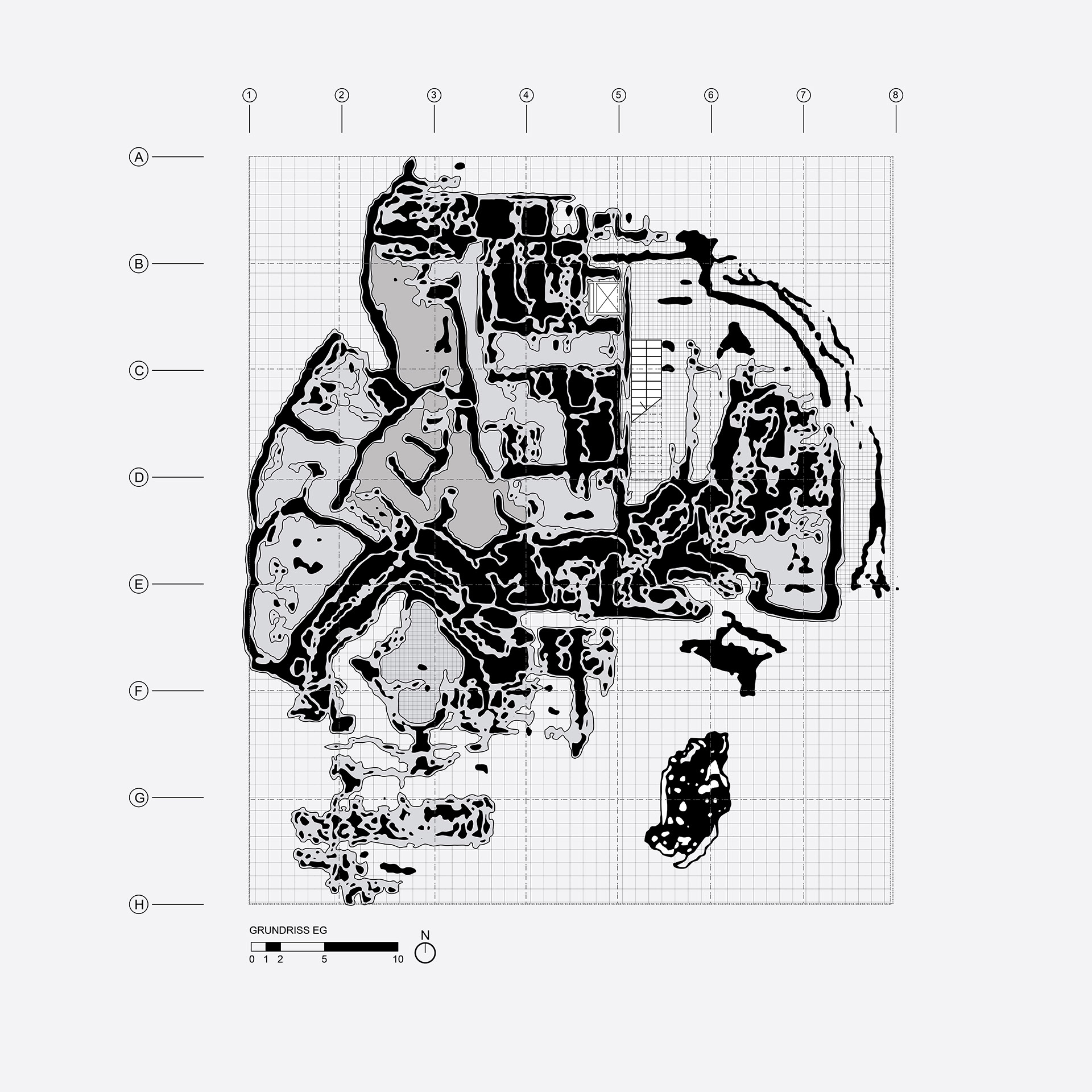
What do you think will be the future of data and computational design in the design field?
New paradigms have the habit to emerge when the existing paradigm has run its course – but what is the current paradigm? What does Neural Architecture bring to the table in regards to a substantial innovation in the Architecture discipline? For one it critically interrogates the role of the architect in the creative process of architecture design. Neural Architecture embraces the possibility of a design method that is deeply informed by existing information in the form of databases and understands that the artificial modeling of neural processes can aid in harnessing the information in Big Data. Interestingly the results do not resemble historic examples, and thus the method is not a repetition of Postmodern tropes, such as collage, quote, and ironic assemblies. The results rather construct a frame around aspects of defamiliarization and estrangement, in that we are able to recognize certain features, without it being a copy. We are still at the very beginning of this new paradigm of architectural production, our Robot Garden is one of the first built projects based on Artificial Neural Networks. Many specific problems need to be solved, such as the relationship between interior and exterior as Neural Networks based on images are only able to solve one of the two at a time. Or the problem of utilizing 3D models in this paradigm. Solutions are under development at this moment, and I look forward to how this new paradigm will impact the built environment in the upcoming years.


